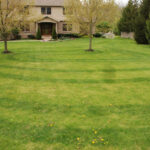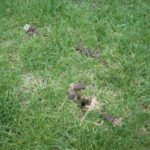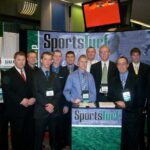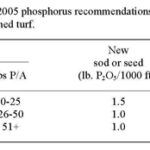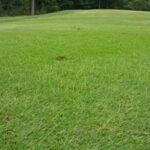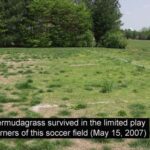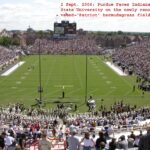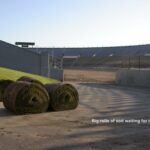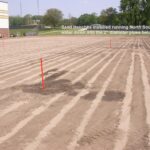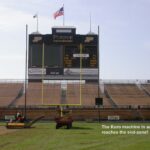Cale Bigelow
It’s not too late to do a lot of good for your lawn
The fundamental principle for effective lawn pest control is to “Cultivate a dense, healthy turf”. One way to promote turf density is to properly feed the plant at a time when it is most capable of utilizing these nutrients for purposes other than leaf growth. For cool-season grasses shoot density naturally increases during the autumn […]
Using clover for lawns?????
Recently I was contacted by a major newspaper reporter who was writing an article about more sustainable lawn systems, or lawns that would required fewer inputs, and was inquiring about the feasibility of using clover as a lawn turf. After a brief head-scratching and a few questions about his intent we had a nice conversation […]
Summer Mowing and Fertilization
By the time you read these words the longest day of the year has approached and the official calendar “Summer” season will have begun. Just as the weather changes as we transition between seasons from late-Spring to Summer the turfgrass plant changes too. First, both air and soil temperatures rise beyond what is optimal for […]
Responsible fertilization of home lawns
A properly fertilized turf has fewer weeds, is more resistant to insects and disease, and decreases water runoff compared to malnourished turf. Concern over the negative effects of nutrient enrichment on water quality is a growing public concern and has led many to start to question turfgrass fertilization practices. Although both nitrogen and phosphorus may […]
Spring Lawn Aerification
Aerification, sometimes called core cultivation is a supplementary lawn cultural practice primarily used to relieve soil compaction and remove thatch (the spongy layer of undecomposed stems at the soil surface). This practices is not necessarily essential to maintaining a lawn, however, it can be very beneficial to most turf areas. In addition, to the aforementioned […]
Turf 101: Limit Spring Fertilization
Many different strategies exist on spring fertilization, but the one fact agreed upon by all turf specialists is to avoid applying heavy nitrogen (N) rates in March or April. Heavy rates would be anything greater than 0.75 lbs of quickly available N/1000 ft2, which causes excessive shoot growth and results in frequent mowing. Furthermore, excess […]
Purdue Team WINS the 2009 GCSAA TURF Quiz Bowl Competition!!!
Six teams traveled last week to the International Golf Industry Show in New Orleans, LA to compete in the 15th annual Golf Course Superintendents Association of America (GCSAA) Collegiate Turf Quiz Bowl. This competition consists of a 3.5 hour written examination that consists of the identification of seeds, turfgrasses, diseases, insects and weeds. In addition […]
Calculating the pounds of fertilizer to apply
There are literally thousands of fertilizers and fertilizer/pesticide combinations available to homeowners and professionals. Therefore, we can’t recommend how many pounds of a specific fertilizer to apply, but rather we must recommend fertilization rates in pounds of nitrogen per thousand square feet or lbs N/1000 sq ft. You can use our fertilizer calculator at www.agry.purdue.edu/turf/fertcalc/Fertilization%20calc.html […]
Fall Nitrogen Fertilization Benefits All Cool-Season Turfs
All cool-season turfgrasses benefit from fall nitrogen (N) fertilization, regardless if it is a lawn, athletic field, or golf course green, tee or fairway. Normally fertilization should begin in mid-September and continue one or two more times until about mid-November. Starting the fertilization program in September will take advantage of favorable growing weather and encourage […]
Nitrogen and Phosphorus: fertilizing lawns to protect water quality
Healthy turf areas provide many environmental and recreational benefits. A properly fertilized turf has fewer weeds, is more resistant to insect feeding and is less disease prone than malnourished turf. Furthermore, a dense turf slow and decreases water runoff following storm events which helps reduce flooding in urban environments. Concern over water quality is growing […]
Fertilization: Do it right and protect the environment
Though much research over the years has shown that when fertilizer is applied properly to turf, it does not leach or runoff. The key to this is proper application as careless applications can cause problems. Following is a quick list of precautions when applying fertilizer (or pesticides) to your lawn. ·Apply the right rate and […]
September is Crucial for Fertilizing All Cool-Season Turfs
With the returning rains in the state, now is the most important time to fertilize cool-season turfgrasses like creeping bentgrass, Kentucky bluegrass, perennial ryegrass, and tall or fine fescue. September fertilization is crucial on all turf areas regardless if it is a lawn, athletic field, or golf course green, tee or fairway. Fertilization in mid-September […]
Something New in Golf Course Turf…Ghost Grass and Mad Tiller Disease???
Photo by: Steve McDonald of Turfgrass Disease Solutions located in Philadelphia Photo by: Cale Bigelow in West Lafayette Over the past week a relatively new turf malady has become prevalent on golf turf throughout the region. This new phenomenon has been referred to as “Mad Tiller Disease”, and “Ghost Grass” in the United Kingdom , […]
Winter damage on bermudagrass
As bermudagrass begins to green up in southern IN and Kentucky , it is apparent that moderate to severe winter damage has occurred. Though we may be a little premature because full green-up and growth is still a week or two away depending on temperatures, it’s important to start formulating a strategy to repair the […]
Late May is Good Time to Fertilize Lawns
The annual phase of rapid cool-season shoot growth of cool-season grasses is nearly complete, though it was diminished this year because of the dry and cool weather. It’s now time to consider fertilizing your lawn because fertilizer now will not dramatically increase vertical growth as long as moderate nitrogen rates are used and it will […]
Managing Surface Organic Matter in Bentgrass Putting Greens
As you begin planning for spring core cultivation, consider the following as some food for thought. Turf research has shown that excessive organic matter, and/or thatch (> ½ inch), in the upper (1-2 inches) rootzone profile can lead to rapid turf decline during stressful summer months. Excessive organic matter results in low soil oxygen, poor/shallow […]
New Era begins for Ross-Ade stadium turf
The Purdue Boilermaker’s 60-35 win this past Saturday was not only the first test for the football program but also the first real test and a historic milestone for Purdue’s newly renovated field. The beginning of this season marks a new era in Purdue football as Ross-Ade stadium becomes the only Big-10 stadium with a […]
Bermudagrass Takes Root in Ross-Ade and the South Football Practice Field
It is in some ways difficult to believe that it has been just over one month since the first “Big Rolls” of ‘Patriot’ bermudagrass were installed in Ross-Ade stadium on 6 June, 2006. The sod 42” wide rolls arrived on refrigerated trucks from the sandy coastal plain soils of Eastern Maryland. Some of you may […]
Football Renovations Continue (Part 2)
Tremendous progress has occurred since our last update, 17 May, on the projects to enhance the football practice and game fields at Purdue University. These have been exciting times for all those associated with the Turf program as we have been able to witness three different turf renovation projects all occurring simultaneously. It has truly […]
Ross-Ade and South Football Practice Field Renovations – Update 17 May 2006
After nearly a week of steady rain in West Lafayette and across the region, work was finally able to continue on the Ross-Ade stadium and South football practice field renovations. The existing Kentucky bluegrass/perennial ryegrass turf in Ross-Ade was removed today with a “Koro” machine. The machine is essentially analogous to a milling machine used […]

